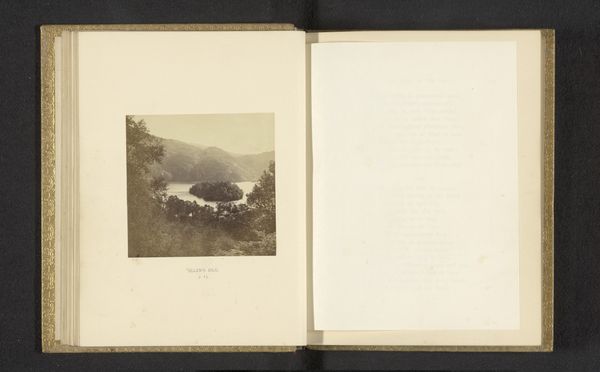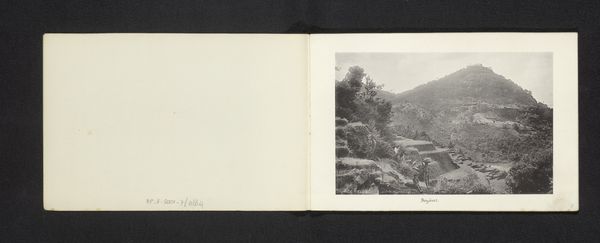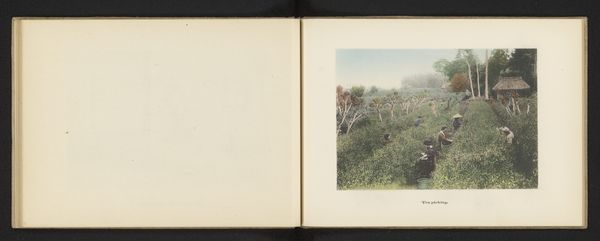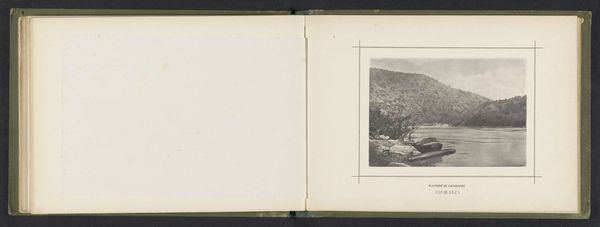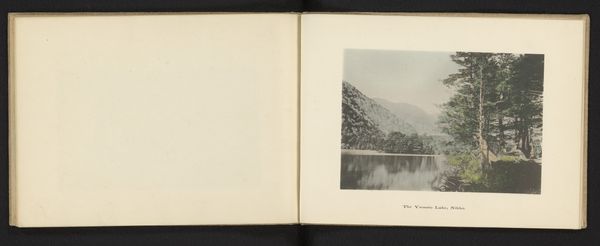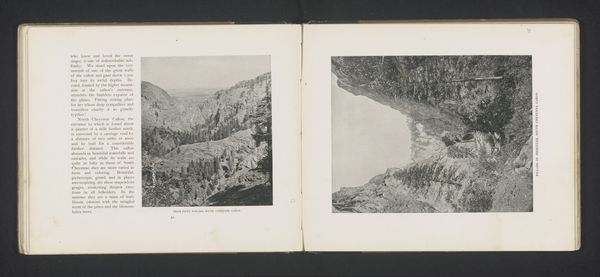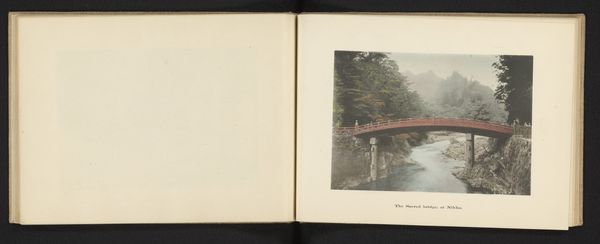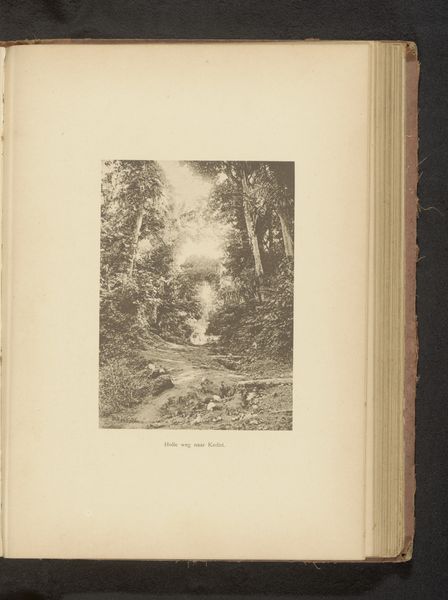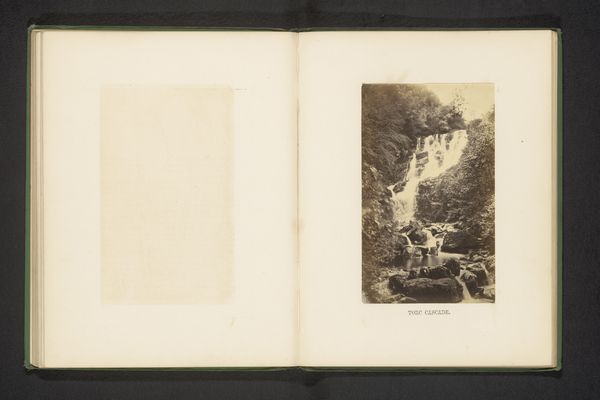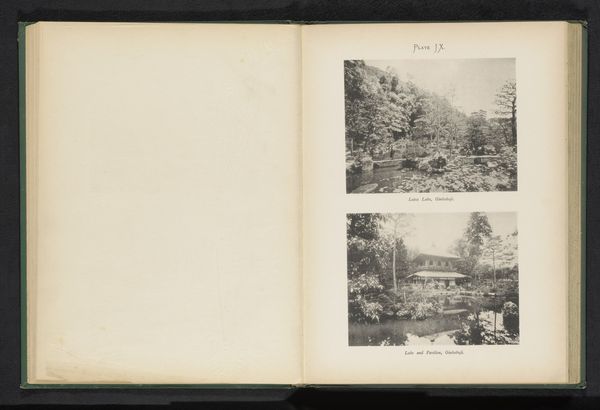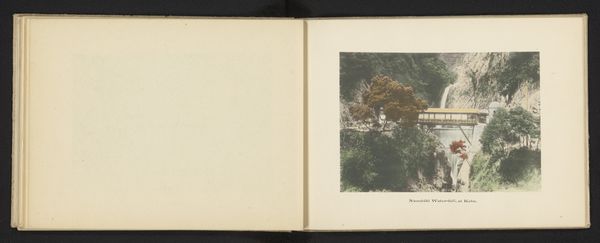
photography
#
photography
Dimensions: height 105 mm, width 150 mm
Copyright: Rijks Museum: Open Domain
Curator: Welcome. Let’s explore “View of the Hozu River near Kyoto,” a photograph, believed to have been captured by Kōzaburō Tamamura between 1895 and 1905. Editor: Immediately, it strikes me as more dreamlike than documentary. The almost hazy quality gives it an incredibly soft, inviting feel, doesn't it? Curator: Precisely. Tamamura’s approach bridges a transition in visual culture, influenced by Japonisme. It suggests a yearning for the aesthetic principles of ukiyo-e in photography. The choice to capture this particular landscape of the Hozu River isn't arbitrary. Rivers are potent symbols, aren’t they? Signifying the passage of time, the continuous flow of life, but also division and borders. Editor: I'm more intrigued by the texture created by this early photographic process. The layering, and almost painting-like quality from a print meant for mass distribution... it almost contradicts its intended function. Did the technology shape the artistic intent, or the other way around? I wonder, were these distributed as individual prints or bound into albums, creating a portable, reproducible version of "high art?" Curator: Albums, quite possibly. This distribution allowed a wide audience access to Japanese landscapes framed by Westernized visual tropes. Editor: So, consumption shaping both subject and style. I find that tension fascinating. It reminds me to reconsider traditional artistic hierarchies. The labor involved, the cost of materials – were they meant to elevate or commodify the subject? Curator: A vital question to consider. Looking at the symbolic weight assigned to this specific kind of idealized Japanese scenery viewed through photography helps unpack our own cultural conditioning. The layering of the Japanese artistic aesthetic within the foreign lens… It speaks volumes. Editor: Yes. Reflecting on how the medium and the method shaped this specific encounter with nature challenges our preconceptions. It nudges me to dig deeper into production and purpose.
Comments
No comments
Be the first to comment and join the conversation on the ultimate creative platform.

